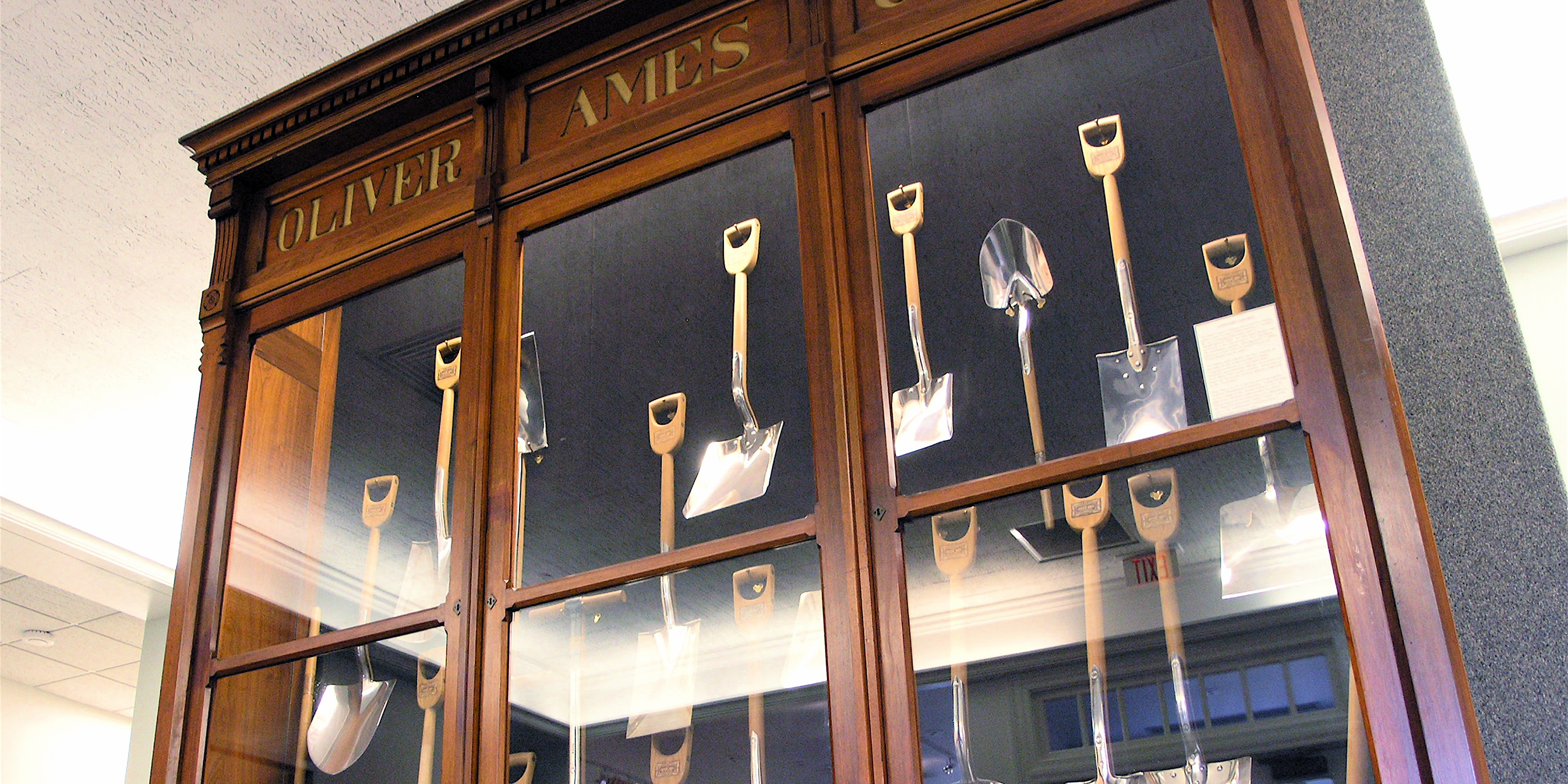Originally published 15 April 2003
In a park in West Bridgewater stands an old iron anvil. A plaque on a nearby forge-stone reads: “The land of this park was bought in 1649 from the Massasoit Indians by Miles Standish and others as part of the Bridgewater Purchase and allotted to John Ames, an original shareholder and settler. And here before the Revolutionary War the fourth inheritor, Captain John Ames, began the manufacture of shovels with a trip-hammer set on this stone.”
These were the first iron shovels made in the Colonies. In 1803, John Ames’s son, Oliver, moved the shovel works to North Easton, and built the company into the largest shovel manufactory in the world. An Ames shovel turned the first spadeful of earth for America’s first railroad.
At the beginning of the 19th century, the fledgling United States of America was an agricultural society. By the end of the century, it was a major industrial power. Shovels played their part in that transformation.
The archives of the Ames Shovel Co. now reside at the Tofias Industrial Archives at Stonehill College, including samples of the company’s products from throughout its history. Here are implements for moving earth, coal, and ore, for canal building, railroad building, field draining. The shovels are a capsule history of a young, robust nation, putting on muscles, flexing its brawn.
What makes the shovels in the Tofias collection so attractive is their scale, their satisfying heft in the hands, the way they move in harmony with human limbs. The wooden handles extend and amplify human force; the steel blades cut and carry. With these instruments, 19th-century Americans turned a raw continent into a free, unified, and stable democracy.
This achievement did not come without a measure of environmental devastation, political scandal, social injustice, even genocide. The balance sheet of history, however, will show, I believe, that a greater percentage of us live better, healthier and longer lives due to industrialization.
The chemist Paul Crutzen has proposed the term Anthropocene (anthro = human) to represent the present age of Earth’s history, in which human artifice is the dominant geological force. The Anthropocene Era can be said to have started in the latter part of the 18th century, he says, when air trapped in arctic ice shows the beginning of growing global concentrations of atmospheric carbon dioxide and methane — products of human industry.
About half of the Earth’s land surface is currently exploited by humans, and all its land and water is touched in some way by the waste products of human cunning. Energy use has grown sixteen-fold in the last century, much faster than population.
What is not yet clear is whether we will control technology or technology will control us.
Biologically, we are still hunter-gatherers who suddenly find ourselves in command of almost unimaginable powers for planetary transformation. It is a central conundrum of human life that our intellects have outraced our instincts; cultural evolution has overtaken organic evolution.
And so we struggle to bring together our genes and our aspirations, wilderness and civilization, spirit and economics, ecological wholeness and human self-interest.
There’s no point in talking about turning the clock back to some idealized agrarian or hunter-gatherer past. Knowledge cannot be unlearned, nor will human ingenuity be suppressed. When John Ames hammered out his first shovel on that anvil in West Bridgewater, he was part of a thrust of cultural evolution that had been going on since our hominid ancestors fashioned the first stone tools.
Scientists and engineers are responsible for ensuring that the Anthropocene Era will be good for the human race, and good for the planet’s diversity of creatures and habitats. Architects and planners are implicated, too, and the managers and stockholders of multinational corporations, politicians, philosophers, poets, and religious leaders.
Most of us, however, will make our contribution for good or ill on the local scale. The Anthropocene Era will find its shape in your neighborhood and mine.



